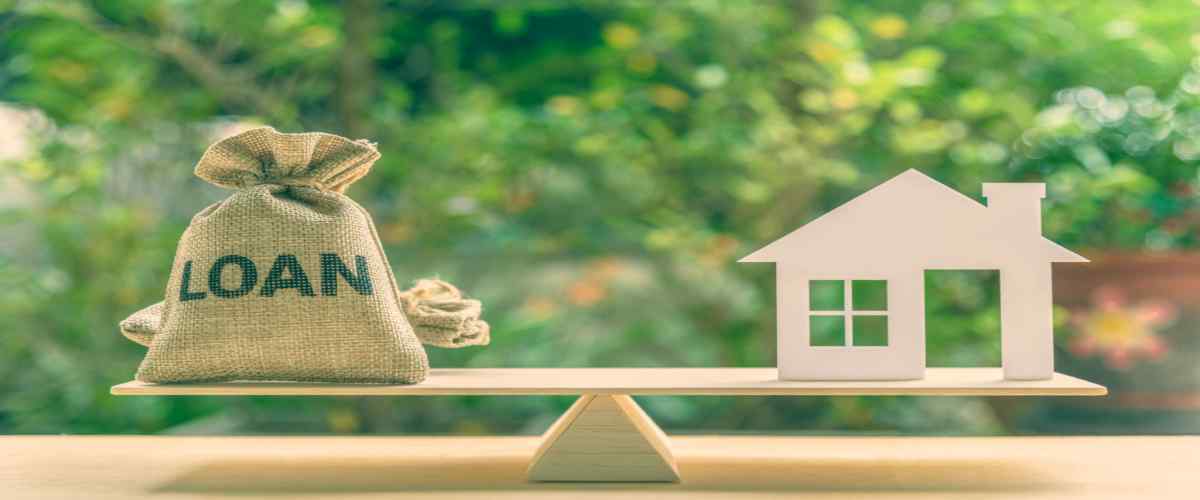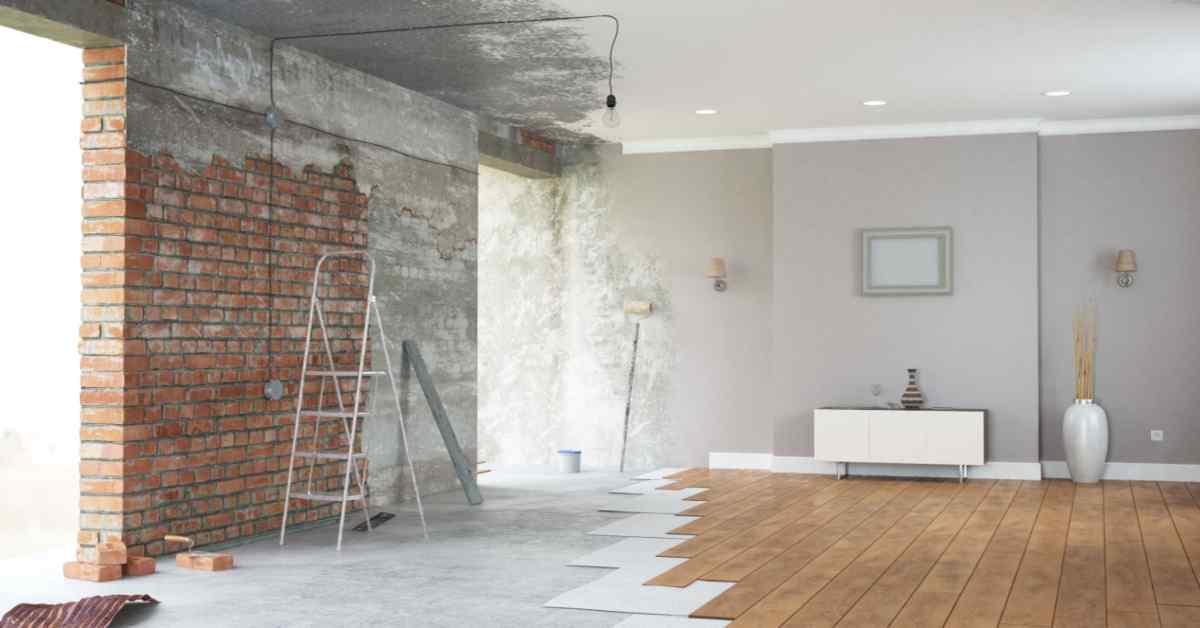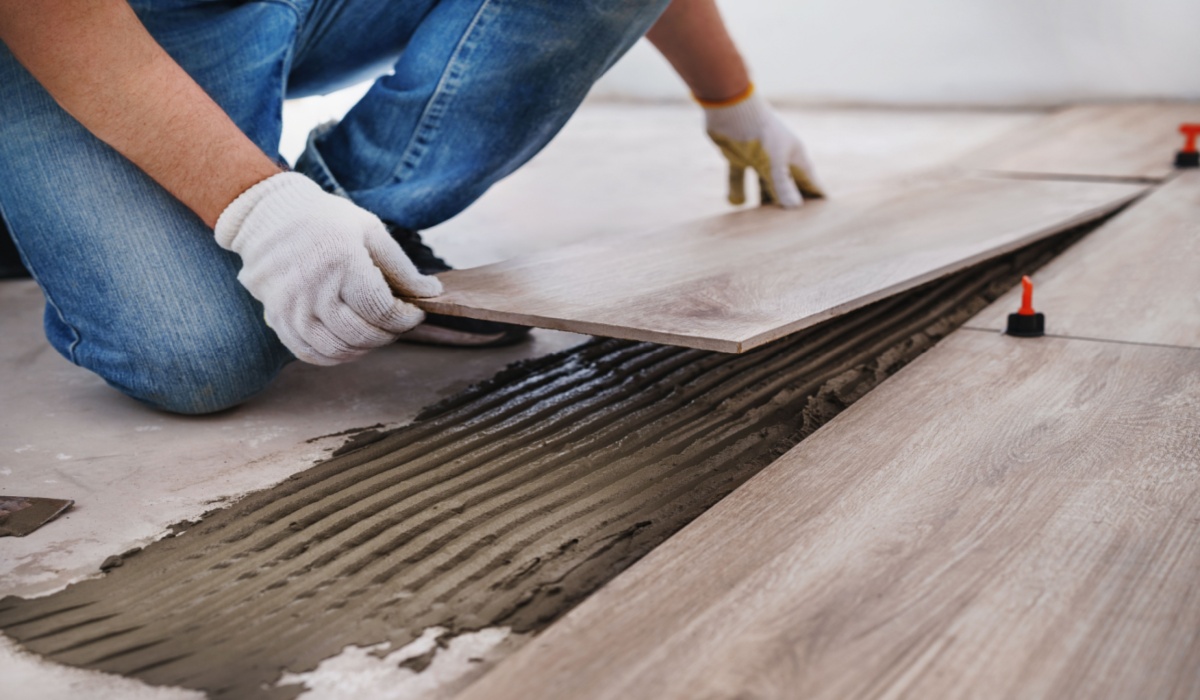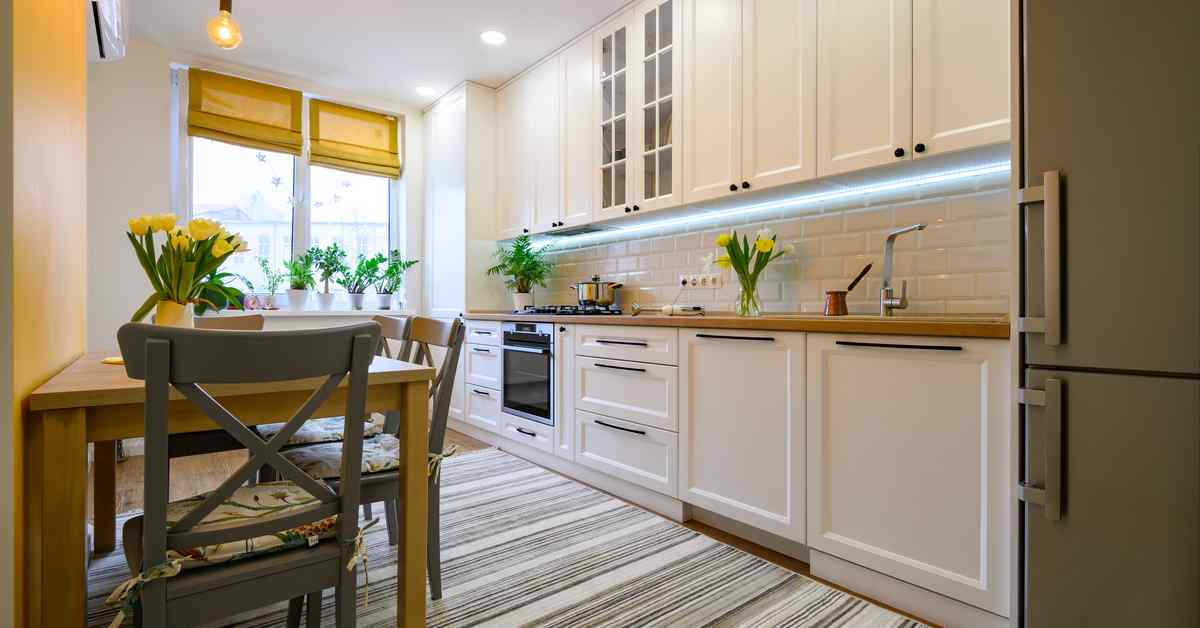Table of Contents
Quality Service Guarantee Or Painting Free

Get a rental agreement with doorstep delivery

Find the BEST deals and get unbelievable DISCOUNTS directly from builders!

5-Star rated painters, premium paints and services at the BEST PRICES!
Loved what you read? Share it with others!


Submit the Form to Unlock the Best Deals Today
Help us assist you better
Check Your Eligibility Instantly

Experience The NoBrokerHood Difference!
Set up a demo for the entire community
Home Renovation Loan: Types, Eligibility and Advantages
Table of Contents
If you wish to repair, remodel, or modify the construction of your present home, a home improvement/renovation loan is the right option for you to consider. In addition, this home renovation loan offers longer loan repayment periods and cheaper interest rates.
Advantages Of Availing Home Renovation Loan
A home renovation loan has several advantages, which we will go over in more detail below:
1. Balance Transfer Facility – Already applied for a home renovation loan that meets your needs but, after some time, discovered another lender that is offering a better and more acceptable deal? This is a common scenario. What would you want if you were in this position? If you wish to transfer all of your cash to a lender that offers you a fantastic deal, you will find it incredibly simple to do this.
Quality Service Guarantee Or Painting Free

Get a rental agreement with doorstep delivery

Find the BEST deals and get unbelievable DISCOUNTS directly from builders!

5-Star rated painters, premium paints and services at the BEST PRICES!
2. No Requirement Of Security As Collateral – A home renovation loan may provide cash much more quickly because it is a no-collateral lending option. You do not have to worry about acquiring and risking your assets as collateral, but you also do not have to wait for the verification of your collateral paperwork. As a consequence, you will get your payments more quickly.
3. Home Renovation Loan Provides You With Flexibility – A personal loan for home remodelling provides more flexibility in use and payments than a credit card. With this section, you can withdraw and reimburse monies from your total sanction. In addition, you should only pay interest on the amount that you utilise rather than on the total punishment. Additionally, you may pay interest-only EMIs and have the principal returned to you after the loan’s duration.
4. Choose A Term That Is Convenient For You – You may choose a loan term that best suits your needs depending on your financial position from a handy range of 24–60 months. This implies that you may reap the benefits of cheap EMIs if you pick a longer loan term, or you can pay higher EMIs and pay off your loan more quickly. Using the home improvement loans Calculator, you can also estimate your monthly EMI well in advance and arrange your repayment schedule appropriately.
Read: Make an Informed Decision with Indian Bank Home Loan EMI Calculator
5. It Entails The Least Amount Of Paperwork – To finish the application process, you must submit a few papers, including identification proof, an employment identification card, wage slips from the previous two months, and bank statements from the last three months from your salary account.
Your high-value home improvement loans will be delivered to you after the lender has verified your eligibility and documentation.
Eligibility for a Personal Loan for Home Improvements
A few fundamental conditions must be met to be qualified for the home renovation loan SBI, and these requirements differ from one lender to the next. Here are the general conditions that you should know about–
| Eligibility Criteria | Requirements |
| Citizenship | Resident citizen of India |
| Age | Between 25 and 58 years old |
| Employment Status | Paid employee of a public or private firm or a multinational corporation (MNC) |
| Minimum Monthly Income (Mumbai/Delhi) | At least Rs. 37,000 |
| Minimum Monthly Income (Chandigarh/Kolkata) | Rs. 32,000 or more |
Different Types of Home Improvement Loans

A. Personal Loans As A Source Of Funds For Home Improvement
Personal loans are the most prevalent home renovation loan interest rate, and they are also the most expensive. The funds may be used for almost anything, but debt consolidation and home upgrades are two typical applications.
Furthermore, personal loans are accessible from various conventional and online lenders, making it simple to determine your eligibility, shop around, and apply for the home renovation loan interest rate with the most advantageous terms and conditions.
A personal loan is a sort of unsecured debt, which implies that it is not backed by property, such as a house or car. This implies that if you default on your loan, creditors will not be able to seize your home or other assets as collateral (although they can ruin your credit and find other ways to get the money back).
It increases the risk associated with a personal home renovation loan for lenders, and they pass that risk on to consumers by increasing interest rates on personal home improvement loans.On the other hand, personal loans are quite straightforward compared to other choices, which means you may obtain your money pretty quickly—sometimes within a day or two. Keep in mind that you will get the funds in a single lump-sum payment. Whether you’re doing your home repair work yourself or hiring a contractor to do them all at once, this may not be the best option.
B. Home Equity Loans
Home equity loans are yet another sort of home repair loan often utilised to finance home improvements and upgrades. Home equity loans, which are secured loans, utilise the equity you have in your home as collateral to secure the financing. This implies that if you fail on your loan, your lender has the legal right to foreclose on your house. Because of this guarantee, this sort of home repair loan is more secure from the lender’s perspective while also being somewhat less expensive for the borrower.
The most difficult component of getting a renovation loan interest rate is figuring out how equity works and how you may utilise it to borrow money against your house. The amount of equity in your property refers to how much of it you possess. In the example above, if you still owe $150,000 on your mortgage but your house is worth $200,000, you have $50,000 in equity in your property. As you pay down your mortgage, the amount of equity you have in your house grows, and eventually, you will be able to buy the property altogether.
According to the Federal Trade Commission, you should be allowed to borrow up to 85 percent of the value of your home equity as a down payment. If you have $50,000 in equity, you’ll typically be able to borrow up to $42,500, which is the maximum amount you may borrow. As a result, if you don’t have much equity in your home—perhaps due to a decrease in the value of your property or as a result of having just recently begun paying off a mortgage—you may not be able to borrow much, if at all.
Because obtaining the best renovation loan is equivalent to obtaining a second mortgage on your property, it is more difficult than obtaining a personal loan. Initial steps should be taken by contacting your present lender to see what possibilities are available. You’ll almost certainly have to go through a more comprehensive underwriting procedure, which may include paying for a house inspection and closing charges and other fees. If you complete all of the steps and are authorised, you will get your money in one huge lump payment.
C. A Home Equity Line Of Credit
Home equity lines of credit, often known as HELOCs, are a hybrid of a home loan and renovation loan and a credit card available to homeowners. HELOCs provide borrowers with access to a restricted amount of cash on an as-needed basis, which means that your monthly payment may alter depending on how much money you borrow. However, this also means that you aren’t paying to borrow money that you don’t yet need, which might be useful if you are doing home improvements over a while.
Similarly to a home loan and renovation loan, a home equity line of credit (HELOC) is secured by the borrower’s property. Homeowners may typically borrow up to 85 percent of the value of their homeless any existing mortgage debt. Lenders also commonly require borrowers to have at least 20% equity in their house to be eligible for financing. HELOCs also need a more extensive underwriting procedure, which may be more expensive and time-consuming than a basic personal loan application process.
Criteria For Eligibility For Home Renovation Loan
| Eligibility Criteria | Requirements |
| Age Range | 21 to 70 years old |
| Credit Score | Minimum of 750 for salaried or self-employed individuals |
| Additional Considerations | Ongoing assessment of income, assets, and obligations |
| Required Documents for Application | - Completed application form- Proof of age- Income documentation/bank statement- Identification as evidence of residence- Documents related to real estate transactions- Quote for expected repair expenses |
Home Renovation Loan Interest Rates and Processing Fees
A home renovation loan can help you turn your dream renovation project into a reality. With various banks offering different interest rates and processing fees, it can be challenging to decide which lender to choose. To help make the decision-making process easier, we have compiled a comparison table of six banks offering home renovation loans in India.
The table includes the interest rate ranges and processing fees for each bank, allowing you to compare and choose the best option for your needs.
| Bank | Interest Rate Range | Processing Fee |
| State Bank of India | 6.70% - 6.90% | Rs 2000 + applicable taxes |
| HDFC Bank | 6.70% - 7.15% | 0.50% of loan amount + taxes |
| ICICI Bank | 6.95% - 7.60% | 2.25% of loan amount + taxes or more |
| Bank of Punjab | 6.75% - 8.90% | 0.35% of loan amount + taxes |
| Axis Bank | 6.90% - 8.40% | 1% of loan amount + taxes |
| Bank of Canara | 6.90% - 8.90% | 0.50% of loan amount + taxes |
Essential Information Before Taking Out A Home Improvement Loan
- The loan may be taken out for up to 15 years at an interest rate ranging from 10.5 to 14 per cent. A few banks are already offering loans for the purchase of furniture.
- When applying for a home repair loan, you must provide documents and invoices from an architect and a bank account statement from the previous six months.
- In addition to this, a KYC (know your customer) form and property documentation are necessary.
- If you get home improvement interest rates from the same financial institution that provided your home loan, the paperwork will be reduced.
- Certain lenders require a physical inspection of the property before issuing a loan; however, most lenders are less concerned with utilising the money and do not demand a property examination.
- If you pay off your loan early, you'll be required to pay a prepayment penalty of about 2 per cent of the remaining amount on your loan.
- This form of loan is available even if you already have a house loan; however, the lending institution will determine the amount.
Understanding Loan-to-Value Ratio for Home Renovation Loans in India
When it comes to home renovation loans in India, understanding the loan-to-value ratio (LTV) is crucial. The LTV ratio compares the amount of the loan to the appraised value of the property, expressed as a percentage. For example, if a home is appraised at ₹30 lakhs and a borrower wants to borrow ₹5 lakhs for renovations, the LTV ratio would be 16.67%.
Lenders use the LTV ratio as a metric to assess the risk of the loan. Typically, the higher the LTV ratio, the riskier the loan is considered to be, which translates to higher interest rates, fees, or charges.
Advantages of a Low Loan-to-Value Ratio for Home Renovation Loans in India
A low loan-to-value ratio (LTV) can have several benefits for Indian borrowers looking to finance their home renovation projects. Here are a few advantages of a low LTV ratio:
- Lower Interest Rates: A lower LTV ratio means that lenders are exposed to lower risk, leading to lower interest rates, which can help borrowers save money.
- Higher Approval Chances: A lower LTV ratio indicates a lesser risk for the lender, which makes the borrower more likely to be approved for the loan.
- Better Terms: Borrowers with a low LTV ratio can benefit from more flexible loan terms, including repayment periods and lower monthly payments.
How to Calculate Loan-to-Value Ratio for Home Renovation Loans in India
Calculating the loan-to-value ratio (LTV) for a home renovation loan in India is a straightforward process. Here's how to calculate it:
- Determine the current market value of your home by getting a property appraisal.
- Subtract the outstanding mortgage balance from the property's market value.
- The remaining value represents the maximum amount of loan you can borrow, taking into account the LTV ratio and the lender's eligibility criteria.
- To calculate the LTV ratio, divide the loan amount by the appraised property value and multiply it by 100.
Strategies to Lower Loan-to-Value Ratio for Home Renovation Loans in India
Borrowers in India can take several steps to reduce their loan-to-value ratio (LTV) for their home renovation loans, such as:
- Making a Higher Down Payment: Making a larger down payment upfront can help reduce the loan amount and lower the LTV ratio.
- Paying off Existing Debt: Paying off any outstanding debt or reducing the outstanding mortgage balance can help lower the LTV ratio.
- Property Renovation: Renovating the property can help increase its appraised value, thereby reducing the LTV ratio.
By following these strategies, Indian borrowers can lower their LTV ratio and potentially receive better loan terms and interest rates.
The RBI has set specific LTV ratios for home renovation loans based on the loan amount. For instance, for loans up to Rs. 30 lakhs, you can get up to 100% of the renovation estimate subject to the LTV ratio not exceeding 90%.
To determine the final LTV ratio, banks, non-banking financial companies (NBFCs), and housing finance companies (HFCs) undertake a credit risk assessment, taking into account several factors like your credit profile, repayment capacity, and market value of the property.
Knowing the LTV ratio is crucial as it can affect the loan amount, interest rates, and loan terms. By understanding the LTV ratio, you can make an informed decision while availing of a home renovation loan and choose the best option that suits your needs.
How Can NoBroker Help
Home renovation and remodelling are something that many homeowners have to ponder at least once in their lives! In India, homeowners often think about making drastic changes to their home after every 7 to 8 years. Getting a home renovation loan has become easier than ever thanks to the widely available information about the interest rate, eligibility and tenure of the loan. However, the legal process can still be confusing and complex. Consulting the loan experts at NoBroker could be the best decision for you! They will guide you along the way and help in everything right from loan application to disbursement. Please leave a comment below this article; our executive will be in touch with you soon.

Frequently Asked Questions
Answer: For house upgrades, most banks provide loans to remodel houses to customers who want to make changes to their properties. It is possible to utilise the loan for various projects, including interior and exterior repairs, room extensions, painting, tiling, drainage, plumbing, flooring, and carpentry.
Answer: If you are remodelling your house, some banks may want you to get a no-objection certificate from your housing society and local corporation before considering your application.
Answer: The processing fee is between 0.5 per cent and 0.75 per cent of the total.
Answer: India's average interest rate for home renovation loans ranges from 6.9% to 10%, depending on different financial factors.
Answer: Yes, you can get a home loan for renovation. It's called a home renovation loan. Many banks, non-banking financial companies (NBFCs), and housing finance companies (HFCs) offer this type of loan. The loan amount is generally based on the cost of the renovation and the property's market value. The maximum loan amount and interest rates vary depending on the lender and the loan's terms and conditions.
Answer: To get a loan for house renovations, you can either opt for a home renovation loan or a personal loan. A home renovation loan is a secured loan, while a personal loan is an unsecured loan. The loan amount, interest rates, and repayment period vary depending on the type of loan you choose and the lender. It's recommended to compare different loan options and choose the one that suits your needs the best.
Answer: Yes, you can get a construction loan for home renovation. Construction loans are designed to cover the costs of building or renovating a property. These loans are typically offered by banks, NBFCs, and HFCs
Loved what you read? Share it with others!
Most Viewed Articles

Home Renovation Costs: Know Before You Renovate
December 24, 2024
11878+ views

November 3, 2024
5493+ views

Revamp Your Sleep Space: Creative Bedroom Renovation Ideas
March 23, 2023
4677+ views

Home Renovation Ideas - Places to Renovate in Your Home
February 24, 2022
4361+ views

Our Round-Up of the Top 15 Kitchen Renovation Ideas
February 18, 2022
4097+ views
We’d love to hear your thoughts
Join the conversation!
Recent blogs in
Home Renovation Costs: Know Before You Renovate
December 24, 2024 by Prakhar Sushant
November 3, 2024 by Siri Hegde K
10 Best Home Renovation Apps for Every Budget 2024
June 5, 2024 by Suju
Revamp Your Sleep Space: Creative Bedroom Renovation Ideas
March 23, 2023 by srivalli susarla
Bathroom Makeover: Top Bathroom Renovation Ideas and Trends
January 30, 2023 by Prakhar Sushant




Hi Hairstyles
The articles you write help me a lot and I like the topic